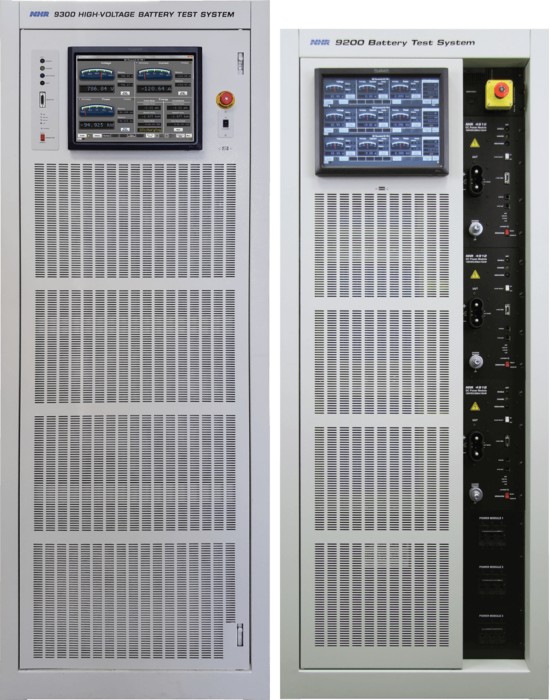Battery Recycling and Second-Life Test Solutions
Overview
Securing the success of electrification in the transportation sector hinges on embracing a circular economy approach. As batteries near their end-of-life, it's crucial to identify optimal second-life applications or ensure their effective recycling.
NI offers cutting-edge battery test solutions designed for validating battery packs in various stages, from used to damaged or nearing end-of-lifespan. Discover how the NI Mid- and High-Voltage Battery Cycler and Emulator stand out as the ideal tools for evaluating high-voltage electric EV battery packs and energy storage systems.
Contents
- Second-Life Battery Test Process
- Second-Life Applications
- Flexible, Modular, Off-the-Shelf Battery Test Systems by NI
- Next Steps
Second-Life Battery Test Process
High-voltage EV packs may not be optimized for EV performance at their end of life, but they may have residual power and capability that is ideal for other applications. For example, the packs may be remanufactured into storage systems that can be used for EV charging. After the application is determined, the packs and its components will be tested again for performance, quality assurance and safety
As shown below in Figure 1, there are typical stages of testing conducted to determine whether a pack will be recycled, remanufactured, or repurposed for a second-life application, in which the battery pack will undergo another series of testing before the product is verified. To comprehensively determine the battery’s conditions, test applications will evaluate state of health (SOH), state of charge (SOC), direct current internal resistance (DCIR), and battery management system (BMS).
Figure 1: Typical stages of testing conducted to determine whether a pack will be recycled, remanufactured, or repurposed for a second-life application.
The steps shown in Figure 1 are described in more detail below.
- Visual Inspection (100%)—Evaluate product interfaces, condition, etc. before further assembly continues.
- Condition Analysis—Test performance to determine the battery pack condition.
- Disassembly/Assembly—Take apart internal components to evaluate, prepare, and assemble for second-life application.
- Sorting and Grading—Identify at-risk components through testing SOH, SOC, state of electronics, etc.
- DCIR/OVC 100%—Batteries subjected to high current test pulses to measure internal resistance. Test checks for leakage.
- BMS Verification (100%)—Verify BMS communication and circuitry is functioning as expected.
- End of Life (EOL)—Functional verification and calibration of finished product.
Second-Life Applications
After the packs and components are retested, they can be deployed in second life applications, such as redeployment in vehicles, recycling, vehicle storage systems, and v2x, v2h, and v2g.
Figure 2: A typical battery test product life cycle and key applications of recycled batteries
Flexible, Modular, Off-the-Shelf Battery Test Systems by NI
NI’s regenerative battery test systems address the wide range of power battery modules and packs used in the electric vehicles and renewable energy storage industries. These battery test systems feature modular and scalable power to help you test a wide range of power levels with ease and flexible configuration.
The NHR-9300 High-Voltage DC Battery Pack Cycler and Emulator as well as the NHR-9200 Mid-Voltage DC Battery Module Cycler and Emulator provide modular and scalable power with flexible control and integration and easy setup and reconfiguration. Additionally, the NHR-9300 and NHR-9200 feature multiple layers of built-in safety, while the NHR-4800 boasts exceptional versatility and a compact design, delivering impressive high-power performance within its 4U chassis.
For second-life purposes, these systems are ideal for the following applications:
- Repair, remanufacturing, refurbishing for redeployment
- Reuse in second life deployment
- Recycling EOL batteries
Figure 3: NHR-9300 and NHR-9200 cabinets
| NHR-9200 | NHR-9300 | NHR-4800 | |
|---|---|---|---|
| Applications | Mid Voltage, Module Level | High Voltage, Pack Level | Low Voltage, Module Level |
| Power | 12 kW up to 252 kW | 100 kW up to 2.4MW | 16.5kW (@480 VAC, 13kW @ DC) up to 165kW |
| Maximum Channels in Parallel | 21 Channels | 24 Channels | 4U Module View datasheet for channel details. |
| Voltage Options | 40 V, 120 V, 600 V | Dual Range 600 V, 1200 V | 80 VDC |
| Maximum Current | Up to 12,600 A | Up to 7,992 A | Up to 400A |
| Modes | CC, CV, CP, Series-CR | CC, CV, CP, Series-CR | CV, CC, CP, CR |
| Loading Modes | Charge/Discharge, Load, Battery Emulation | Charge/Discharge, Load, Battery Emulation | Charge/Discharge, Load, and Battery Emulation |


